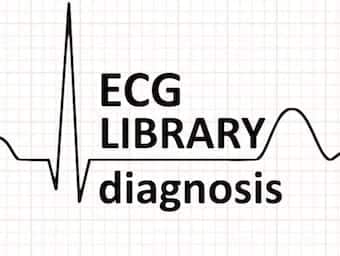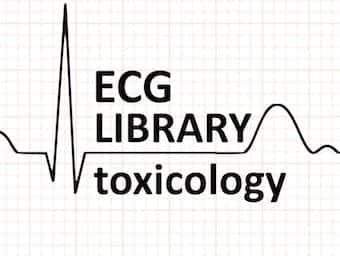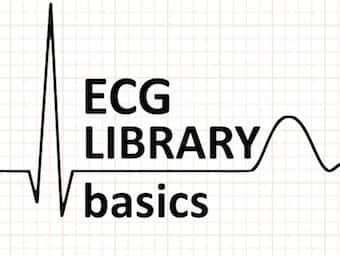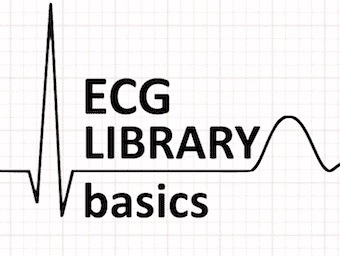
Ventricular Tachycardia – Monomorphic VT
Definition, mechanism, and clinical significance of ventricular tachycardia (VT). Typical ECG findings with examples of monomorphic VT

Definition, mechanism, and clinical significance of ventricular tachycardia (VT). Typical ECG findings with examples of monomorphic VT

Ventricular Flutter. Extreme form of VT with loss of organised electrical activity. Short lived with progression to ventricular fibrillation

A review of the ECG features of inferior STEMI, Inferior ST elevation myocardial infarction LITFL ECG Library

A review of the ECG features seen in TCA overdose, which occur due to a combination of sodium channel blockade and antimuscarinic effects

Sinus rhythm with resting heart rate (HR) > 100 bpm in adults, or above the normal range for age in children

Sinoatrial exit block - failed propagation of pacemaker impulses beyond the SA node with intermittent failed atrial depolarisation (dropped P waves)

Sick Sinus Syndrome. Characterized by abnormal sinus node functioning with resultant bradycardia and cardiac insufficiency.

Sinus Bradycardia. Sinus rhythm with a resting heart rate of < 60 bpm in adults, or below the normal range for age in children.

ECG features of sinus arrhythmia. Sinus rhythm with beat-to-beat variation in the P-P interval producing an irregular ventricular rate.

In normal sinus rhythm, pacemaking impulses arise from the SA node and are transmitted to the ventricles via the AV-node and His-Purkinje system

A description of the "right ventricular strain" ECG pattern with some great ECG examples. Life in the Fast Lane ECG Library

A review of the ECG features of right ventricular infarction with some useful tips on how to diagnose this important condition